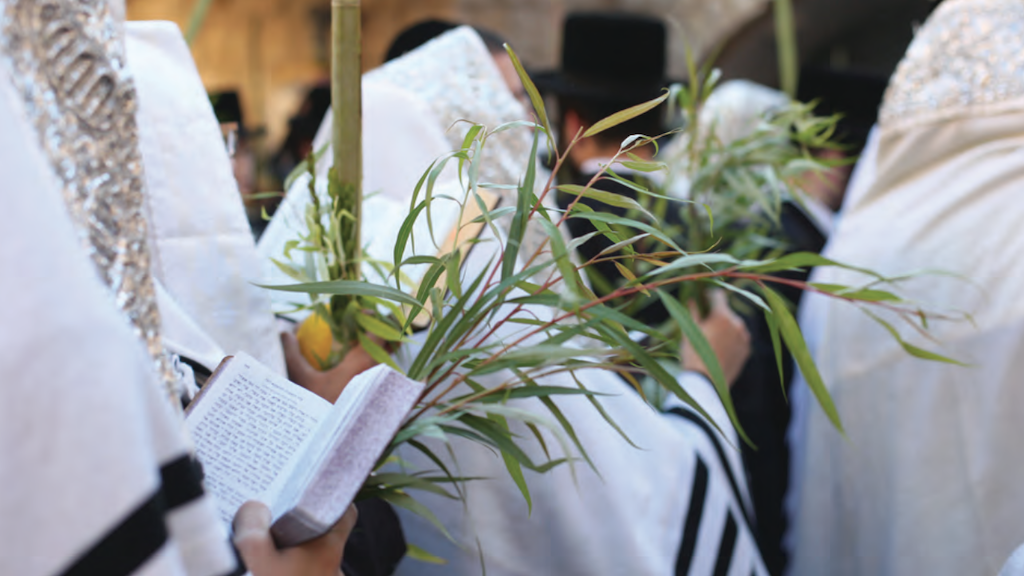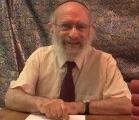Sukkot – Feast of Tabernacles
To Exist or Not to Exist
Let me start with a question: do we exist or do we not exist? In Ten Sayings the world was created (Mishna Avot 5:1). God said and there was. These Divine Words and Letters, these Ten Sayings through which everything was created and through which everything we experience as a world exists, these Ten Utterings are always and still ‘within the Speaker’ and are spoken by God over and over again.
In Jewish thinking, this means that we are a manifestation of God ‘within God’, without perceiving it – without being able to perceive it. “For no man can see Me and live” (Shemot – Exodus 33:20).
Or in other words: we exist, but in a different kind of existence, an existence that is not our own. With these words God manifested Himself at the Sinai revelation: “Anochi Hashem Ellokeicha – I, the Lord (the Divine four- letter Name that Jews do not pronounce) – elevated above Time and Space – am your God in Time and Space.”
Something of God’s concealment in relation to the world was lifted. And so King David could declare – and so it is said or sung before the reading of the Torah in the synagogue: “Lecha Hashem hagedulah”. You reveal Yourself in Greatness, Power, Glory, Victory and Honour; to You belong all that is in heaven and on earth. You manifest Yourself in Your Kingship” (1 Chronicles 29:11; Psalm 99:5 and 9).
These are the Seven Divine attributes or properties that God has ‘given’ Himself, to create, maintain, lead, judge the world with.
Seven Divine attributes. Seven is therefore a holy number, to be found in the worldwide seven-day week and in the Torah cycles of seven years (Sabbatical year) and seven times seven years (Jubilee year), in the seven days of Pesach, in the seven weeks towards the Feast of Weeks Shavu’ot. And so on.
Dependency
This brings us to the seven days of Sukkot, the Feast of Tabernacles. On the last day of this seven-day feast, seven circumambulations are made in the shul (synagogue). On the last day of this seven-day feast, seven circumambulations are made in the shul-room, whereby each time one of the above mentioned Divine Attributes is proclaimed.
Seven days of Sukkot is first of all seven days of staying in the sukkah. This is usually a less sturdy structure, with a leafy roof, through which you should be able to see the stars at night. This is to become aware that the world is not a solid building in itself. The world is a hidden manifestation of God and therefore we remain completely dependent of God.
Four Kinds
In what way do we also experience our dependence on God? In what way can we feel that we literally need God as bread?
By holding four different kinds of plant material with our hands. The lulav palm branch, the etrog-citrus fruit, the three myrtle branches and the two willow branches. All of them vegetative; for the rainy season is about to begin, we hope, with God’s help in the land of Israel. Only with God’s Help. Everything vegetative needs this rain and needs therefore God’s help. Of course, in Israel you feel this more strongly than in the Diaspora.
Plus in Israel this dependence on God is experienced extra strongly during this Sukkot harvest festival in the realisation that the right to the land is not based on the decision of the UN in 1947, but in essence only on God’s decision to give Erets Yisrael to the Jewish people forever.
The fact that God is everywhere – He is, after all, the only Real Existence – is expressed by moving the Four Species in all six directions; horizontally and vertically, forwards, to the right, backwards, to the left, upwards and downwards.
Intense Joy
Feeling this dependence on God, experiencing it, brings joy, intense joy. Z’man Simchateinu – Time of our Joy is the appropriate name for these days. Including the following days of the Closing Feast. Then, on the day of Simchat Torah – Joy of the Law, seven circumambulations are made in the shul again. Dancing, with the Torah scrolls in their arms!
On that day the Torah is read out, after which the reading of Bereshit-Genesis is started immediately. This is a kind of circumambulation in itself.
The series of special days, started with Rosh Hashanah, is thus ended in joy, relieved and recharged as we are for the coming dark days of autumn and winter.






